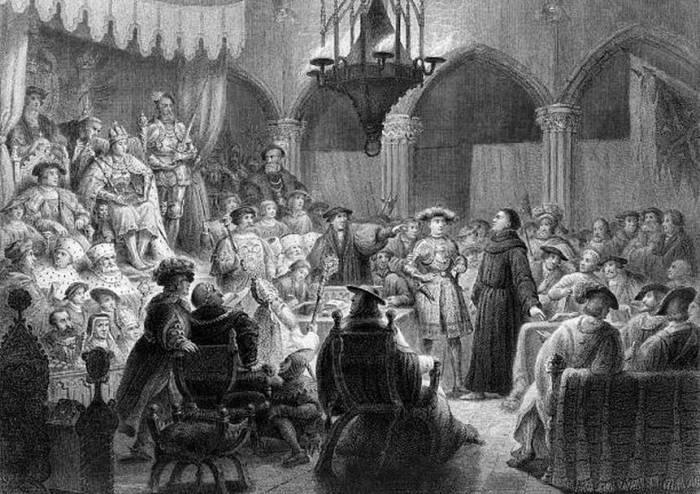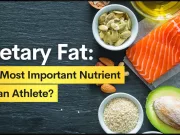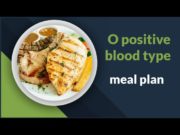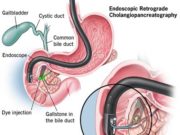What is diet of worms – What is the Diet of Worms? This pivotal event in 16th-century Europe marked a turning point in the history of Christianity and Western civilization. Held in the German city of Worms in 1521, the Diet was a gathering of prominent figures, including Emperor Charles V and the young Martin Luther, a theologian whose revolutionary ideas were shaking the foundations of the Catholic Church.
The Diet of Worms was convened to address the growing controversy surrounding Luther’s teachings, which challenged the authority of the Pope and the doctrines of the Church. The central issue at hand was the question of whether Luther’s writings were heretical, and if so, what measures should be taken to address them. The Diet’s outcome would have far-reaching consequences, shaping the future of Europe and influencing the course of religious and political history for centuries to come.
The Concept of “Diet of Worms”
The Diet of Worms, held in 1521, was a pivotal event in the history of the Protestant Reformation. It marked a significant turning point in the relationship between the Holy Roman Empire and the emerging Protestant movement. The Diet was a gathering of high-ranking officials, including princes, bishops, and representatives of various cities, convened by Holy Roman Emperor Charles V to address the growing threat of Martin Luther’s teachings.
Key Figures Involved
The Diet of Worms was attended by several key figures who played crucial roles in the unfolding events:
- Emperor Charles V: The Holy Roman Emperor, who convened the Diet and was tasked with resolving the controversy surrounding Luther’s teachings. He sought to maintain religious unity within his vast empire and avoid a major schism.
- Martin Luther: The German theologian and monk who sparked the Protestant Reformation with his 95 Theses, challenging the authority of the Catholic Church. He was summoned to the Diet to defend his teachings and renounce them under threat of excommunication.
- Johann Eck: A prominent Catholic theologian and fierce opponent of Luther. He was tasked with presenting the Catholic Church’s case against Luther and arguing for his condemnation.
- Frederick the Wise: The Elector of Saxony, a powerful German prince who was a protector of Luther. He played a significant role in ensuring Luther’s safe passage to and from the Diet.
Issues Debated at the Diet of Worms
The primary issue debated at the Diet of Worms was the validity of Martin Luther’s teachings and their impact on the Catholic Church. Specifically, the following points were discussed:
- Luther’s 95 Theses: The Diet debated the validity of Luther’s critiques of indulgences, which he argued were a form of corruption within the Church.
- The Authority of the Pope: Luther challenged the Pope’s authority and argued that the Bible was the ultimate source of religious authority, not the Pope or Church tradition.
- Justification by Faith: Luther’s doctrine of justification by faith alone, which stated that salvation is achieved through faith in Jesus Christ, was a major point of contention with the Catholic Church.
Martin Luther’s Role in the Diet of Worms
Martin Luther was summoned to the Diet of Worms to defend his teachings. He arrived on April 16, 1521, and was given the opportunity to recant his writings. Luther refused to recant, stating that he would only renounce his teachings if they were proven to be false from Scripture.
“Unless I am convinced by the testimony of Scripture or by clear reason, I am bound by the Scriptures I have quoted and my conscience is captive to the Word of God. I cannot and will not recant anything, for it is unsafe and dangerous to act against one’s conscience. Here I stand, I can do no other. God help me.”
Luther’s defiant stance at the Diet of Worms solidified his role as a leader of the Protestant Reformation and further fueled the religious tensions within Europe. The Emperor ultimately condemned Luther as a heretic and outlawed his writings. However, Luther’s teachings continued to spread, leading to the establishment of Protestantism as a major branch of Christianity.
The Edict of Worms
The Edict of Worms, issued by Holy Roman Emperor Charles V in 1521, was a significant decree that aimed to suppress the burgeoning Protestant Reformation. It declared Martin Luther a heretic and outlawed his teachings, marking a pivotal moment in the religious and political landscape of Europe.
The Provisions of the Edict of Worms, What is diet of worms
The Edict of Worms Artikeld a series of measures aimed at curbing the spread of Luther’s ideas.
- It declared Martin Luther an outlaw and heretic, stripping him of his rights and protections as a citizen of the Holy Roman Empire.
- It prohibited the publication, distribution, and dissemination of Luther’s writings, effectively censoring his theological arguments.
- It called upon all secular authorities within the Empire to enforce the Edict and to suppress any individuals who supported Luther’s teachings.
- It mandated that Luther be apprehended and brought to trial, with the potential for severe punishment, including imprisonment or even execution.
Comparison with Other Religious Decrees
The Edict of Worms can be compared with other religious decrees of the time, such as the Papal Bull “Exsurge Domine” issued by Pope Leo X in 1520. Both decrees aimed to condemn Luther’s teachings, but the Edict of Worms went further by declaring Luther an outlaw and calling for his arrest. This marked a significant escalation in the conflict between the Catholic Church and the Reformers.
Impact on the Reformation
The Edict of Worms had a profound impact on the Reformation. While it failed to silence Luther, it inadvertently contributed to the spread of his ideas. The edict sparked widespread debate and discussion about religious authority and the role of the Church, further fueling the Protestant movement.
- The Edict’s attempt to suppress Luther’s teachings only served to make them more appealing to those who were already questioning the authority of the Catholic Church.
- The Edict also led to a growing divide between Catholic and Protestant regions of Europe, setting the stage for the religious wars of the 16th and 17th centuries.
- The Edict’s condemnation of Luther also inspired a sense of solidarity among Protestants, strengthening their resolve to challenge the established order.
The Legacy of the Diet of Worms
The Diet of Worms, while a pivotal moment in European history, wasn’t just a singular event. Its impact reverberated through centuries, shaping the religious and political landscape of the Western world. It serves as a turning point in the history of Christianity, marking the beginning of the Protestant Reformation and leaving a lasting imprint on the modern world.
The Long-Term Consequences of the Diet of Worms
The Diet of Worms had a profound impact on the religious and political landscape of Europe. It marked the beginning of the Protestant Reformation, a period of significant religious upheaval and change. The condemnation of Luther’s teachings led to the spread of Protestantism across Europe, ultimately resulting in the division of Christianity into Catholicism and Protestantism. This division had far-reaching consequences, leading to religious wars, political instability, and the rise of new nations.
The Lasting Impact of the Diet of Worms on Religious and Political History
The Diet of Worms solidified the power of the Holy Roman Emperor, Charles V, as the ultimate authority in the empire. It also demonstrated the growing influence of secular rulers in religious matters, challenging the authority of the Pope. The Edict of Worms, while ultimately unsuccessful in silencing Luther, set a precedent for religious freedom and the right to dissent. It also led to the development of new religious doctrines and practices, which ultimately contributed to the growth of religious pluralism and tolerance in Europe.
The Role of the Diet of Worms in Shaping the Modern World
The Diet of Worms had a profound impact on the development of modern society. It played a crucial role in the rise of the nation-state, the development of religious freedom, and the emergence of new political and social movements. The Reformation, sparked by the Diet of Worms, challenged the established order and led to the rise of new ideas about individual liberty, religious tolerance, and the separation of church and state. These ideas would eventually influence the development of modern democracies and the concept of human rights.
A Timeline of Key Events Related to the Diet of Worms and Its Aftermath
- 1517: Martin Luther publishes his 95 Theses, sparking the Protestant Reformation.
- 1521: The Diet of Worms condemns Luther’s teachings and declares him a heretic.
- 1524-1525: The German Peasants’ War, a revolt inspired by Luther’s teachings, breaks out.
- 1529: The Protestation at Speyer, a declaration of support for Luther’s teachings by a group of German princes, marks the beginning of the Protestant movement.
- 1530: The Augsburg Confession, a statement of Protestant beliefs, is presented to the Diet of Augsburg.
- 1555: The Peace of Augsburg is signed, formally recognizing the legal existence of Lutheranism within the Holy Roman Empire.
The Diet of Worms in Literature and Art
The Diet of Worms, a pivotal event in the history of the Reformation, has left an enduring mark not only on historical records but also on the realms of literature and art. The dramatic confrontation between Martin Luther and the Holy Roman Emperor, coupled with the profound religious and political implications of the event, has inspired numerous creative works across centuries.
Literary Representations of the Diet of Worms
The Diet of Worms has served as a backdrop and source of inspiration for a range of literary works, from historical novels to dramatic plays. Authors have drawn upon the event to explore themes of religious conflict, individual conscience, and the struggle for freedom of thought.
- “Luther” (1933) by Johann Wolfgang von Goethe: This dramatic poem by the renowned German writer portrays the Diet of Worms as a pivotal moment in Luther’s life, capturing his unwavering belief in his convictions despite facing condemnation from the Church and the Emperor.
- “The Heretic” (1956) by Katherine Paterson: This historical novel tells the story of the Diet of Worms from the perspective of a fictional character, a young woman who witnesses the events unfold and becomes caught up in the turmoil of the Reformation.
- “The Devil’s Advocate” (1997) by Morris West: This novel, while not directly focused on the Diet of Worms, explores the themes of religious persecution and the struggle for individual conscience, drawing inspiration from the historical context of the event.
Artistic Representations of the Diet of Worms
The Diet of Worms has also been a subject of artistic representation, with painters and sculptors capturing the event in various ways. Artists have sought to portray the drama of the confrontation, the personalities of the key figures involved, and the broader historical context of the Reformation.
- “Martin Luther Before the Diet of Worms” (1896) by Anton von Werner: This painting depicts Luther standing before the Emperor, Emperor Charles V, and the assembled dignitaries, conveying the tension and drama of the moment.
- “Luther at Worms” (1907) by Julius Hübner: This sculpture portrays Luther with a determined expression, holding a copy of his writings, symbolizing his unwavering belief in his convictions.
- “The Diet of Worms” (1913) by Carl von Piloty: This painting, while not a direct depiction of the event, captures the atmosphere of the Reformation era, with figures representing the clash between the old and the new.
| Work | Medium | Artist | Year | Description |
|---|---|---|---|---|
| “Martin Luther Before the Diet of Worms” | Painting | Anton von Werner | 1896 | Depicts Luther standing before the Emperor, Emperor Charles V, and the assembled dignitaries, conveying the tension and drama of the moment. |
| “Luther at Worms” | Sculpture | Julius Hübner | 1907 | Portrays Luther with a determined expression, holding a copy of his writings, symbolizing his unwavering belief in his convictions. |
| “The Diet of Worms” | Painting | Carl von Piloty | 1913 | Captures the atmosphere of the Reformation era, with figures representing the clash between the old and the new. |
Modern Interpretations of the Diet of Worms: What Is Diet Of Worms

The Diet of Worms, a pivotal event in European history, continues to resonate in the modern world. Its legacy is not confined to the annals of history but actively informs contemporary debates on religious freedom, political authority, and the relationship between faith and state. The Diet of Worms’s enduring significance lies in its enduring impact on the development of modern Western society.
Contemporary Relevance of the Diet of Worms
The Diet of Worms serves as a reminder of the enduring tension between religious conviction and political power. The conflict between Martin Luther and the Holy Roman Emperor, Charles V, highlights the challenges of reconciling individual conscience with established authority. This tension continues to play out in modern society, particularly in debates surrounding religious freedom, the separation of church and state, and the role of religious institutions in public life.
Ongoing Debates Surrounding the Diet of Worms
One of the most enduring debates surrounding the Diet of Worms centers on the interpretation of Luther’s defiance. Some argue that Luther’s stance was a courageous act of individual conscience and a catalyst for religious reform. Others contend that his defiance was disruptive and ultimately led to the fragmentation of Christianity. This debate continues to shape discussions on the nature of religious authority, the limits of individual conscience, and the role of dissent in society.
Perspectives on the Diet of Worms from Different Historical and Theological Viewpoints
The Diet of Worms has been viewed from various historical and theological perspectives.
- Catholic Perspective: The Catholic Church, while acknowledging the historical significance of the Diet of Worms, maintains that Luther’s actions were ultimately a betrayal of the Church’s teachings and authority. From this perspective, the Diet of Worms represents a pivotal moment in the history of the Church, marking the beginning of the Protestant Reformation and the subsequent fragmentation of Christendom.
- Protestant Perspective: From a Protestant perspective, the Diet of Worms is celebrated as a moment of triumph for individual conscience and religious freedom. Luther’s defiance, they argue, challenged the authority of the Catholic Church and paved the way for the emergence of Protestantism. This perspective emphasizes the importance of personal faith and the right to interpret scripture independently.
- Secular Perspective: Secular historians view the Diet of Worms as a significant event in the history of European politics. They highlight the power struggle between the Holy Roman Emperor and the emerging Protestant movement, and the role of the Diet of Worms in shaping the political landscape of Europe. This perspective emphasizes the complex interplay of religious and political factors in the development of European history.
Visual Representation of the Diet of Worms and Its Impact on the World
A visual representation of the Diet of Worms could depict a scene from the event itself, with Martin Luther standing before Charles V, the assembled delegates, and the Imperial Diet. The image could be framed by a map of Europe, showcasing the spread of Protestantism and the subsequent religious conflicts that erupted in the wake of the Diet of Worms. The image could also include symbols representing the key themes of the event, such as a burning book representing the condemnation of Luther’s writings, a dove representing peace, and a broken chain representing the shattering of religious unity.
Last Point
The Diet of Worms stands as a testament to the power of individual conscience and the potential for change when long-held beliefs are challenged. Luther’s defiance and the Edict of Worms that followed set in motion a chain of events that led to the Protestant Reformation, a period of religious upheaval and political transformation that reshaped the map of Europe. The Diet of Worms remains a crucial event in history, a reminder of the enduring struggle between tradition and innovation, faith and reason, and the enduring quest for individual freedom and religious tolerance.
Q&A
What were the key figures involved in the Diet of Worms?
Key figures included Emperor Charles V, Martin Luther, Frederick the Wise, and Cardinal Cajetan.
What were the main issues debated at the Diet of Worms?
The main issues debated were the validity of Luther’s teachings and the authority of the Pope.
What was the outcome of the Diet of Worms?
Luther was declared a heretic and outlawed by the Holy Roman Empire, but he refused to recant his beliefs, setting the stage for the Protestant Reformation.
How did the Diet of Worms influence the course of history?
The Diet of Worms was a pivotal event that led to the Protestant Reformation, which significantly reshaped the religious and political landscape of Europe.
What is the lasting impact of the Diet of Worms?
The Diet of Worms had a profound and lasting impact on religious and political history, contributing to the rise of Protestantism, the fragmentation of Christianity, and the development of religious freedom in the West.
The “diet of worms” is a common phrase, but it doesn’t actually refer to a specific diet. It’s more of a metaphorical term, often used to describe someone who is overly concerned with every little detail of their food intake.
If you’re looking for a more balanced and practical approach to healthy eating, a clean diet plan can be a great starting point. Instead of focusing on minute details, a clean diet plan emphasizes whole, unprocessed foods, which can be a much more sustainable and enjoyable way to nourish your body.
A diet of worms is a phrase used to describe a situation where someone is experiencing a significant amount of misfortune or hardship. This is often associated with a lack of control over one’s circumstances, much like the way a worm is at the mercy of its environment.
A balanced diet, rich in fiber, can help promote a healthy digestive system, which in turn can contribute to a more positive outlook on life. To learn more about the recommended daily intake of fiber, check out this resource on how much dietary fiber per day.
While a “diet of worms” may seem bleak, taking steps to improve your health can help you navigate life’s challenges with more resilience.
The term “diet of worms” is often used figuratively, referring to a situation where someone is constantly bombarded with negative or challenging information. However, when dealing with actual digestive issues like irritable bowel syndrome (IBS), understanding the best dietary approach is crucial.
To learn more about managing IBS, you can check out this helpful resource: what is the best diet for irritable bowel syndrome. Finding the right dietary balance can help individuals navigate the challenges of IBS and ultimately improve their overall well-being.





















